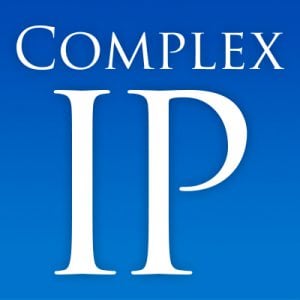In Mastermine Software, Inc. v. Microsoft Corporation, Case No. 2016-2465 (Fed. Cir., October 30, 2017)(Available Here), the Federal Circuit Court of Appeals affirmed the district court’s claim construction, but reversed the court’s indefiniteness determination. The Appeals Court found that the claim language included permissible functional language that merely claimed the functions that the system possessed and the functions of the recited structure, which structure was capable of performing the recited functions.
MasterMine sued Microsoft for patent infringement of U.S. Patent Nos. 7,945,850 (the ‘850 patent) and 8,429,518 (the ‘518 patent). Both patents disclose methods and systems that allow a user to easily mine and report data maintained by a customer relationship management (CRM) application. The patents describe a process by which an electronic worksheet, a multi-dimensional analysis table, known as a pivot table, allows a user to quickly and easily summarize or view large amounts of CRM data.
The district court construed “pivot table” to mean “an interactive set of data displayed in rows and columns that can be rotated and filtered to summarize or view the data in different ways.” The district court also held the claims invalid as being indefinite under Section 112 of the Patent Act for improperly claiming two different subject-matter classes. Thereafter, the parties stipulated to final judgments of noninfringement and invalidity for indefiniteness, with MasterMine reserving the right to appeal the claim construction order.
The Federal Circuit affirmed the district court’s claim construction. The Federal Circuit looked to the claim language, specification and prosecution history and concluded that the district court properly construed “pivot table” to mean an “interactive set of data displayed in rows and columns that can be rotated and filtered to summarize or view the data in different ways.” Each time the claims recite the generation of a pivot table, they further recite within the same limitation that the generated pivot table contains data or presents data. The specification also discusses that the pivot table allows for analyzing or manipulating captured CRM data. Finally, the prosecution history emphasized that a pivot table is created when filled with data.
The Federal Circuit reversed the court’s indefiniteness determination. In doing so, the Federal Circuit reviewed and summarized its cases on indefiniteness. In IPXL Holdings, LLC v. Amazon.com, Inc., 430 F. 3d 1377 (Fed. Cir. 2005), the Federal Circuit held that a single claim covering both an apparatus and a method of use of that apparatus is invalid as being indefinite under section 112, paragraph 2. However, the Court recognized in Mastermine that apparatus claims are not necessarily indefinite for using functional language, citing Microprocessor Enhancement Corp. v. Tex. Instruments Inc., 520 F.3d 1367, 1375 (Fed. Cir. 2008). Means-plus-function format is explicitly authorized by statute. In the present patents, the Federal Circuit found that the claims are simply apparatus claims with proper functional language.
In IPXL Holdings, LLC, the user was required to input data, therefore it was unclear when the infringement occurred, either upon creating the system or the user input means to accept a transaction. Likewise, in In re Katz Interactive Call Processing Patent Litigation, the Katz patent was indefinite as it created confusion as to when direct infringement occurs because the claims are directed both to systems and actions performed by individual callers. 639 F.3d 1303, 1318 (Fed. Cir. 2011).
In Rembrandt Data Techs., LP v. AOL, LLC, the claims were held indefinite because the first four elements recite apparatus elements: buffer means, fractional encoding means, second buffer means and trellis encoding means, however the final element is a method: transmitting the trellis encoded frames. 641 F.3d 1331 (Fed. Cir. 2011). In HTC Corp. v. IPCom GmbH & Co., KG, the claims were held valid because the claim merely establishes those functions as the underlying network environment in which the mobile station operates, not a mobile station that performs the six enumerated functions. 667 F.3d 1270 (Fed. Cir. 2012). In UltimatePointer, LLC v. Nintendo Co., the claims were held valid because they make clear that the “generating data” limitation reflects the capability of that structure rather than the activities of the user, and do not reflect an attempt to claim both an apparatus and a method, but instead claim an apparatus with particular capabilities. 816 F.3d 816 (Fed. Cir. 2016).
In the present case, the Federal Circuit found that the claimed language is permissible functional language – “presents”, “receives” and “generates” – used to describe capabilities of the “reporting module.” The claims at issue here merely claim that the system possesses the recited structure which is capable of performing the recited functions.
The claims are distinguishable from IPXL Holdings and Katz, because the patents in those cases claim the system’s capability to receive and respond to user selection, rather than claiming the user’s act of selection. It is clear that infringement occurs when one makes, uses, offers to sell, or sells the claimed system.


